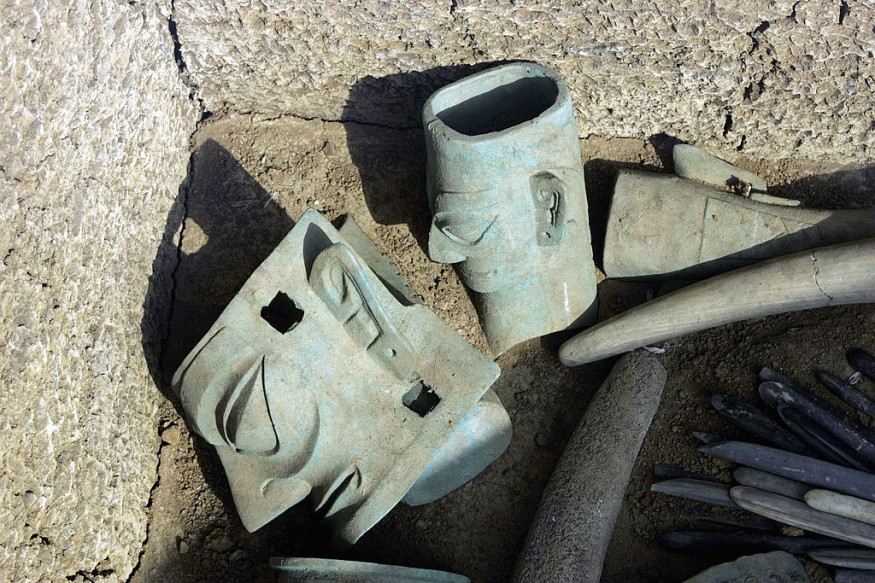An ancient trove was recently unearthed in China. According to the experts, the collection of artifacts included several pieces related to the civilization's mysterious past. Major finds are comprised of a bronze altar and a deformed sculpture of a dragon with a nose of a pig.
Ancient Chinese Treasures from Sanxingdui Site

A new archaeological discovery from China was confirmed last Monday. The scientists that conducted the study said that it is one of the major sites that could shed light on the unknown and unrecorded past of the country's ancient culture.
Experts found the unique trove in a spot located at southwestern Sichuan province's popular Sanxingdui ruins.
Scholars led the discovery from Sichuan University and Peking University. According to a press release, the team excavated approximately a thousand pieces of handcrafted and metal works from the site. The materials used for these items include jade, bronze, and gold.
The collection dates back 3,000 to 4,5000 years ago, the experts said.
The Sanxingdui site was first discovered in the late 1920s. The archaeological community in the country considers the place as one of the key locations that could give a glimpse of China's ancient civilization.
Scientists theorize that the treasures found at the site once belonged to a dynasty during the reign of the Shu Kingdom. This era lasted for about 2,000 years after being established 4,800 years ago.
ALSO READ : Pre-Hispanic Maya City 'Xiol' Unearthed by Construction Crew, Metropolis Dates Back 1,400 Years Ago
A Peek at China's Mysterious Shu Kingdom
Most of the trove came from the site's seven and eight pits. The most interesting artifact from the ancient riches was a tortoise-shaped lid that contained the jade pieces.
The cover was shaped from bronze, while the jade items were mostly sculptures of dragon heads. NBC reports that remnants of silk fabric were found around the compartment, suggesting that the cloth was used to cover the entirety of the tortoise-shaped basket.
Another sculpture gained the attention of the archaeologists. This separate craft was spliced into three parts and featured an image of a snake with a horn, a tusk, and a human head. The upper portion of the sculpture contains what appears to be a wine vessel shaped like an ancient trumpet.
Sichuan Provincial Cultural Relics and Archaeology Research Institute specialist Ran Honglin explained that the elements and designs from the treasures are commonly found in other finds related to the Shu Kingdom, meaning that the era was fond of using the same art that we see today. Other designs and ceramics were identified to come from the Zhou Dynasty.
The efforts to combine these attributes mean that the Sanxingdui site was indeed an essential region during the ancient civilization of China, Honglin continued.
The ancient trades were also prominent during the time, as the evidence from the site was previously seen scattered across many excavation spots of the country, suggesting a functioning integration and exchange in the century, Honglin said.
Since the first excavations from the Sanxingdui site commenced in the 1980s, approximately 13,000 items have already been collected by experts. The site was unintentionally discovered by a local farmer that will repair the sewage system of their property, reports Yahoo News.
RELATED ARTICLE : Missing Rudder of HMS Invincible Warship Discovered 60 Meters from Wreckage After Battle of Cape Finisterre 200 Years Ago
Check out more news and information on Archaeology in Science Times.










